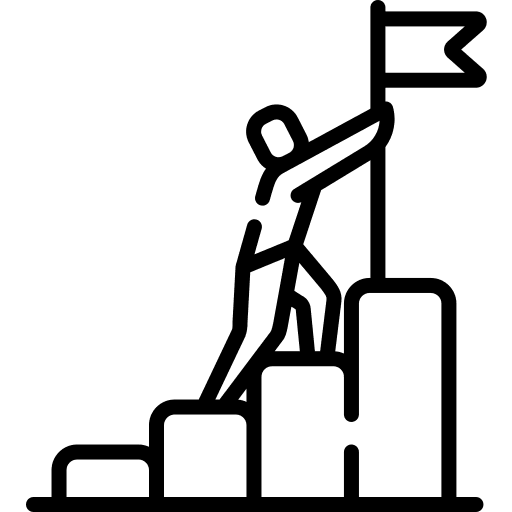Product Led Growth Strategy and Best Practices
Product-led growth (PLG) is a business strategy that defines the product as the primary driver of growth; this stands in contrast to more traditional sales-led growth strategies. Product-led growth strategies follow a bottom-up distribution model where the product communicates its value to a wide range of customers compared to sales-led models. This approach is often used to accelerate growth.
Slack, Zoom, and HubSpot are examples of companies that have successfully leveraged product-led growth strategies and have seen exponential growth as a result. If you have ever used any of these, you may have noticed the seamless signup, which is followed by self-explanatory product interfaces. Product-led companies build easy-to-use products and provide value to customers right out of the box with minimal human intervention. This helps reduce onboarding friction, leading to reduced time to value (TTV) and lower customer support costs.
This article focuses on the B2B market, exploring the key elements of a product-led growth strategy that can help companies drive growth and reduce customer churn. These elements of the product-led growth strategy can help B2B companies reduce friction while measuring and delivering value.
| Goal | Methods |
|---|---|
| Reduce friction |
|
| Measure and deliver value |
|
Reducing friction
Reducing friction helps lay the foundations of a well-built product-led growth strategy for both customers and internal company departments. The ultimate goal is to build a system that can handle bottom-up distribution at scale.
Reduced friction makes a product easier and more convenient for users, which leads to higher adoption and engagement. When users have a positive experience, they are more likely to tell others about the product and continue using it themselves, driving product growth.
Prioritize self-service functionality
A self-service function is the key to ensuring frictionless onboarding and retention. It allows customers to easily sign up and try the product as well as giving them the freedom to find answers to their questions and the ability to solve problems on their own.
This includes the following:
- In-app support for self-signups
- An extensive product knowledge base and set of tutorials
- In-app guides
- Automated email triggers and reminders
- Ensuring 24/7 uptime for your SaaS application and knowledge bases
- Product communities and forums
By prioritizing self-service on the product roadmap, companies can reduce customer reliance on support teams while shrinking the time between actions performed by the customer.
Introduce a free tier or trial
Contact forms on product websites fail to cash in on customers with high interest in the product, while free tiers or trial signups capture such customers and help them try the product before committing to a purchase. This is extremely important in allowing customers to experience the product’s value and determine if it meets their needs, which can lead to an increase in retention and conversion.
Free tiers and trials are also exceptional lead-generation tools. They can help companies capture and filter leads before nurturing them into paying customers, through personalized communications and marketing.
Automate email triggers to reduce the learning curve
Email triggers encourage users to keep moving through the learning phase. By sending these emails at the right time, the likelihood of customers adopting the product and driving growth will be increased.
Email automation should be well thought out, timed, and limited. Sending too many emails from your brand may result in an unsubscribe or an increase in customer churn. Meaningful emails may constitute the following:
- Transactional emails with clear CTAs and next steps
- Notifications (possibly daily or weekly summaries)
- Knowledgebase articles based on the user’s lifecycle stage
- Analytical summaries (weekly or monthly)
Utilize in-app guided tours
Guided tours help users learn how to perform key tasks, navigate through the product, and learn about key product features. App tours should trigger during the onboarding flow when customers try a new feature, or they can be made available through a help app.
Guided tours should be an optional feature for most B2B products, and users should be able to close the tour whenever they want. This ensures that guided tours do not interfere with the customer experience of more advanced users.
Invest in end-user product documentation
Product documentation, including knowledge bases, tutorials, and videos, is crucial for providing customers with the information they need to extract value from the product. Step-by-step guides should cover each aspect of the product and should include a search box or index.
Communities and forums are also great ways to engage with early customers and to understand their likes and dislikes about a product. These communities often require B2B companies to dedicate resources to make sure that the community grows and thrives by providing customers with prompt responses and issue resolutions.
Remove incomplete or untested functionality
When implementing a B2B product led-growth strategy, it is important that users be presented with fully functional and properly tested features. This is especially important for early-stage customers, who are less likely to give feedback or reach out for support before they churn.
Avoid perfectionism
Product-led companies rely on a short time to market to test and iterate on ideas. A product with a few useful workflows is better than a product with an exceptional design and features that customers don’t use. B2B PLG companies need to have mechanisms in place to act on customer feedback by reiterating and improving on features their customers need.
Embrace PLG at the business level
A product-led growth strategy is not just implemented within the product or engineering team; rather, it is a company-wide effort that requires close collaboration among many departments. Product-led growth affects how the marketing, development, design, customer support, and product teams function, and it’s important for all these teams to work together in harmony.
Here’s how these departments may differ in their approach under PLG compared to companies using conventional business models:
- Marketing: Amplify the reach of the product through community-building, implementing referral plans, and using virality in the B2B space.
- Development: Work in collaboration with the product and design teams by prioritizing features that drive product usage and retention.
- Design: Prioritize the user experience (UX) from the start, and implement regular data-driven updates.
- Customer Support: Maintain responsibility for customer satisfaction and loyalty and work with the product and design teams to identify pain points to eliminate them in subsequent releases.
- Product: Update roadmaps and stay connected with the teams above to ensure that the teams and product are focused on delivering value.
Measure and deliver value
Measuring value allows product-led companies to understand how well their products are performing. This information can be used to direct the product and target marketing and communications efforts toward users who are most likely to convert to paying customers. It can also aid in identifying which customers are at risk of churning.
Set up KPIs and automate analytics
The first step in measuring the value of your product is setting up KPIs both for your business and for your customers. KPIs may vary depending on a product’s niche or customers. These KPIs may include revenue per customer, time to value (TTV), feature adoption rate, customer lifetime value (CLV), and more.
Automating the data collection and reporting process early in your journey helps with making quicker decisions while saving time and reducing the risk of erroneous reporting. Gainsight PX helps automate your product metrics with minimal engineering time involved.
Deliver value earlier in the customer journey
Making sure that the “a-ha!” moment is delivered when using the product for the first time is the key to making users come back to explore the product further. This is aided by delivering analytical reports within a week of a trial’s start, so users have a reason to champion your value proposition with their management. These reports should highlight your value proposition and how well your product helped them achieve it. This proof of value combined with the “a-ha!” moment helps prevent disengagement and loss of interest over the first few weeks of onboarding.
It is important that product value be explicitly shared with customers in the form of analytical reports or case studies; this should ideally be done within the first week of using the product. This encourages users to continue using the product and convert into paying customers, knowing that it benefits their businesses.
Create a customer feedback loop
An automated customer feedback loop helps drive the product-led growth strategy. Insights about satisfaction and usage statistics help define the company’s priorities and indicate the direction of both the product and the company.
Here are the steps to creating a good automated feedback loop:
- Identify key metrics like net promoter score (NPS), customer satisfaction (CSAT), or customer lifetime value (CLV). This guide explains these metrics in detail for those interested in learning more about them.
- Set up and collect automated surveys or feedback forms triggered when a user performs certain actions.
- Analyze the data to identify patterns and trends for the usage of a feature or functionality.
- Use the data to drive the product’s direction and to identify customers that the company should focus on.
- Regularly review and update the feedback loop, including the metrics used, data analysis process, and questions, to ensure that it stays relevant and actionable.
- Close the feedback loop by reconnecting with customers to communicate how their feedback was used or by evaluating their responses to any new feature or functionality implemented as a result of their feedback.
Integrate product metrics with customer success management metrics
Customer success management (CSM) effectively replaces the sales teams in most product-led companies and helps manage key business metrics like CLV. Integrating product metrics with CSM metrics can help track and improve the success of a product-led growth strategy. This can be done by:
- Mapping the product’s metrics, like adoption rate, engagement rate, and revenue, to related CSM metrics to determine correlations. For example, high revenues may indicate a high CLV.
- Use these metrics to identify areas for improvement by identifying how the product can be improved to better meet customer needs or how customer success can help improve the product’s experience.
- Use tools that help automate and connect the dots between product experience and customer success. Gainsight PX and CS help close the gap between product and customer success by identifying key areas for improvement and delivering outcomes your customers desire.
Conclusion
Product-led growth is a powerful business strategy that can drive growth and improve customer retention. It is driven by reduced friction throughout the customer journey, along with measuring and acting on the product’s key performance indicators. Adopting a product-led growth strategy can be extremely beneficial for your company because, when done correctly, it can improve efficiency and result in exponential growth.


